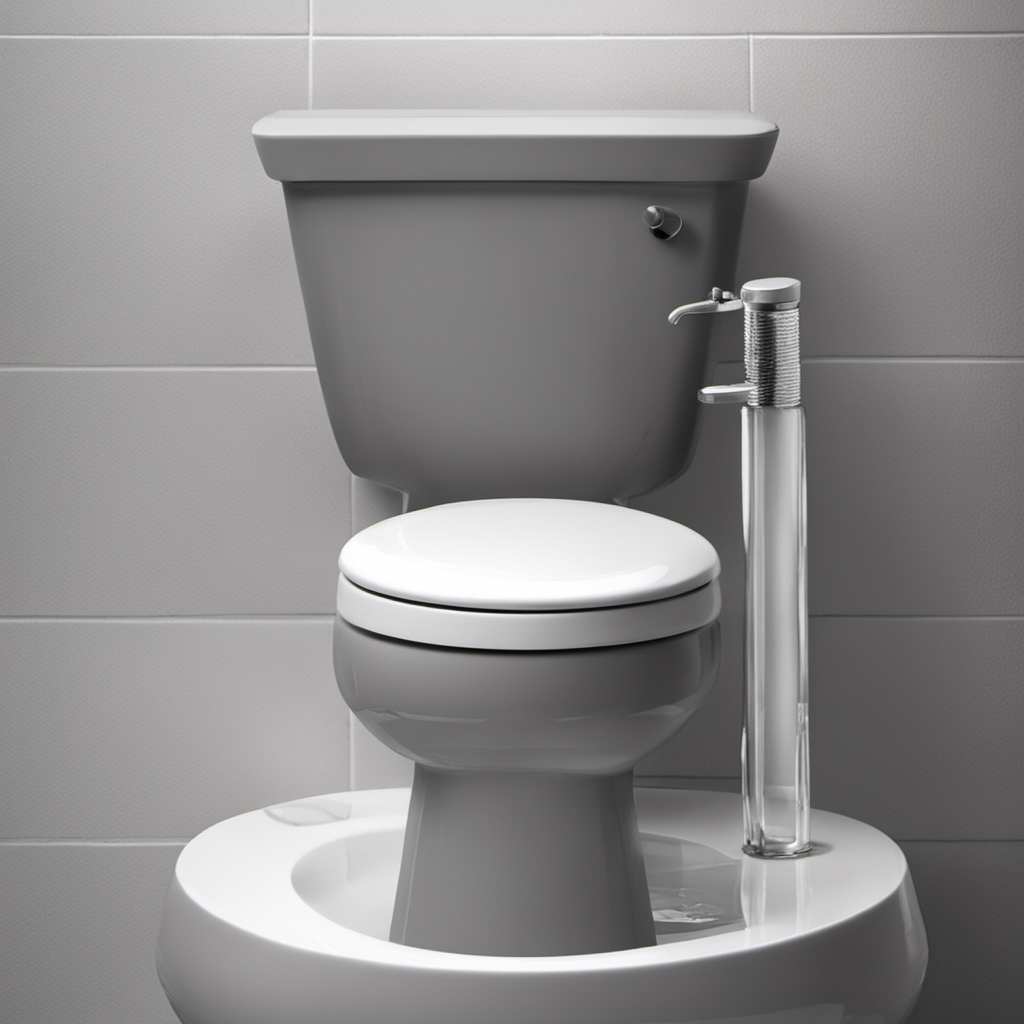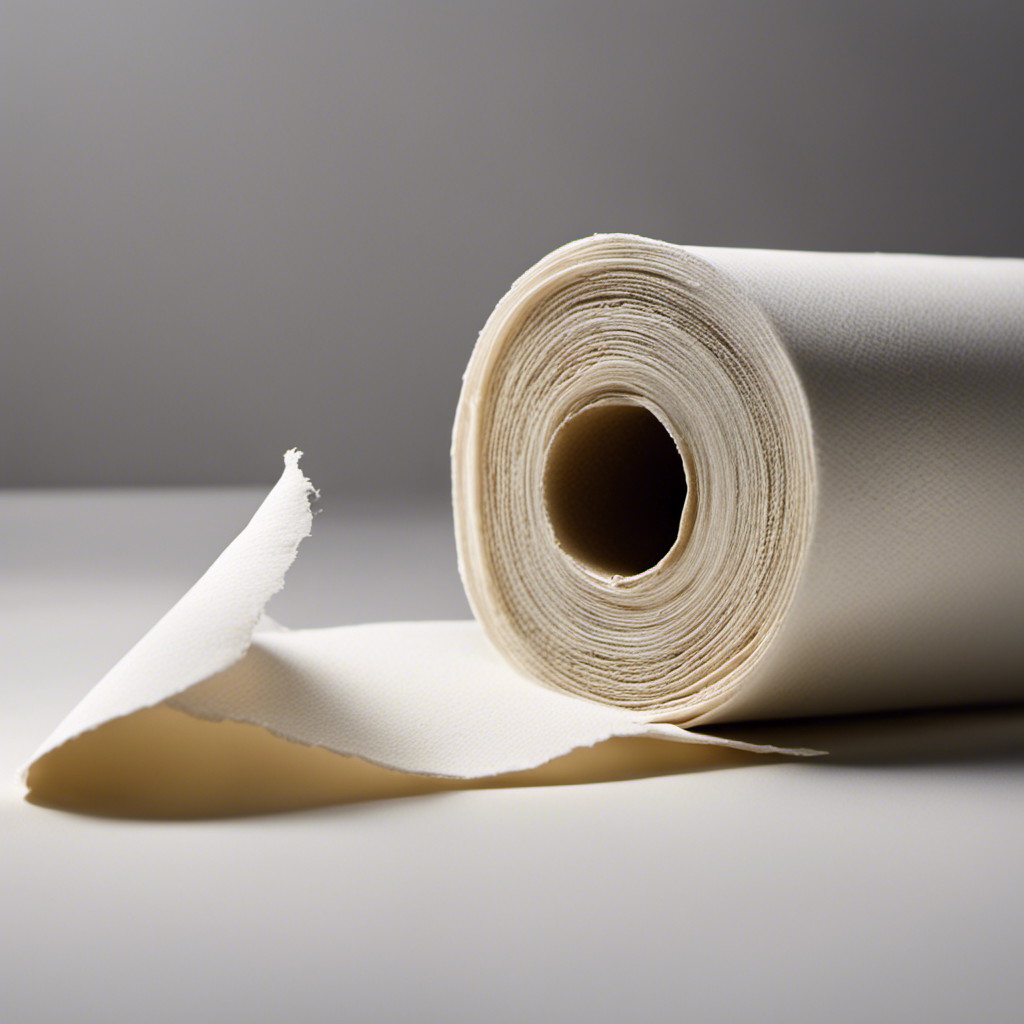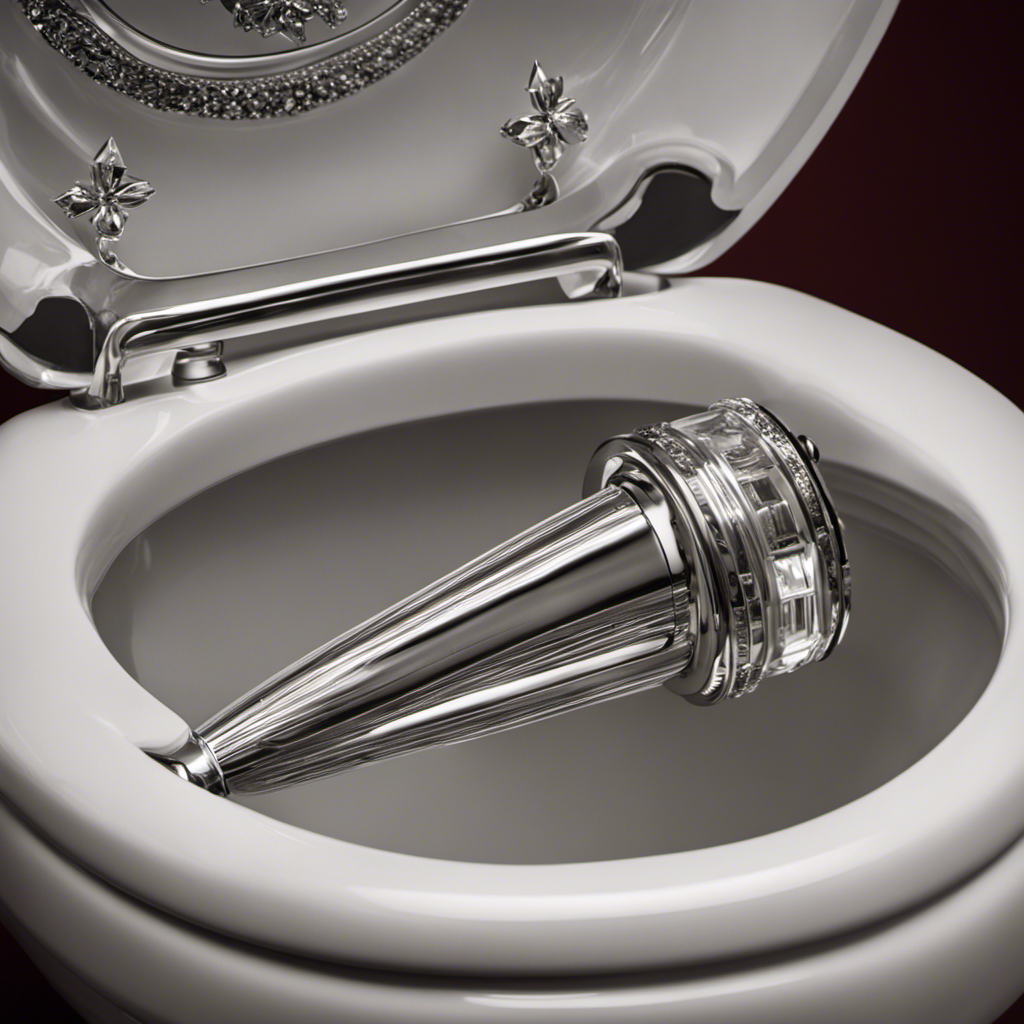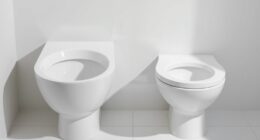Hey there!
Ever had the frustrating experience of a clogged toilet? Trust me, I’ve been there too. But fear not, because I’ve got some expert tips and tricks to help you prevent those clogs from happening in the first place.
In this article, I’ll share my practical knowledge on understanding the causes of toilet clogs, proper flushing techniques, essential tools for unclogging, regular maintenance tips, and troubleshooting common issues.
So let’s dive in and keep those toilets clog-free!
Key Takeaways
- Avoid flushing foreign objects down the toilet, such as wipes, feminine hygiene products, or excessive toilet paper.
- Regularly clean the toilet bowl to prevent buildup and stains.
- Use the right amount of toilet paper and flush in stages to prevent overloading the system.
- Have essential tools on hand, such as a plunger and drain snake, to quickly handle potential toilet clogs.
Understanding the Causes of Toilet Clogs
To prevent toilet clogs, you need to understand what causes them. Common signs of a clogged toilet include water rising to the rim when you flush, slow drainage, and gurgling sounds.
One of the main culprits is flushing foreign objects down the toilet, such as wipes, feminine hygiene products, or excessive toilet paper. Another cause can be a buildup of mineral deposits or hard water deposits in the pipes.
To unclog a toilet, you can try a few DIY methods. First, use a plunger to create suction and dislodge the clog. If that doesn’t work, you can try using a toilet auger or a drain snake to physically remove the clog.
Remember to always be cautious when using chemicals as they can damage your pipes.
Proper Flushing Techniques for a Clog-Free Toilet
Using the right amount of toilet paper and flushing it down in stages can help keep your toilet free from clogs. Here are some practical tips for flushing efficiency and water-saving techniques:
-
Use the right amount of toilet paper: Excessive use of toilet paper can easily lead to clogs. Use only what is necessary to avoid overloading the system.
-
Flush in stages: Instead of flushing everything at once, flush in stages. This allows the water to flow smoothly and prevents the toilet from getting overwhelmed.
-
Use water-saving flushes: Most toilets have a dual-flush system that allows you to use less water for liquid waste. Take advantage of this feature to save water while maintaining flushing efficiency.
By following these flushing techniques, you can prevent toilet clogs and save water at the same time.
Now, let’s move on to the essential tools for unclogging a toilet.
Essential Tools for Unclogging a Toilet
By having the necessary tools on hand, you can quickly and easily handle any potential toilet blockages.
Two essential tools for unclogging a toilet are toilet plungers and drain snakes.
A toilet plunger is a must-have tool for every bathroom. It is designed to create suction and force water through the pipes, dislodging any blockages in the process.
On the other hand, a drain snake, also known as a plumber’s snake, is a flexible, coiled wire that can be inserted into the toilet drain to break up and remove stubborn clogs.
Having both of these tools in your arsenal will ensure that you are prepared for any toilet clog emergency.
Now, let’s move on to some regular maintenance tips to prevent toilet clogs.
Regular Maintenance Tips to Prevent Toilet Clogs
Keep your toilet running smoothly by regularly cleaning the bowl and ensuring that only appropriate items are flushed. Here are some practical tips for toilet clog prevention and maintenance:
-
Use a toilet brush and cleaner regularly to remove any buildup or stains in the bowl. This will help prevent clogs caused by debris sticking to the sides.
-
Avoid flushing items that can easily clog the toilet, such as sanitary products, wipes, paper towels, or excessive amounts of toilet paper. These can quickly block the pipes and lead to a clogged toilet.
-
Consider installing a toilet auger or plunger for emergencies. These tools can be used to remove minor clogs before they become major problems.
Troubleshooting Common Toilet Clogging Issues
If you’re experiencing frequent clogs, it may be helpful to troubleshoot common toilet issues.
One of the most common causes of toilet clogs is flushing excessive amounts of toilet paper or non-flushable items. To prevent clogs, it’s important to use only the recommended amount of toilet paper and avoid flushing items like wipes, feminine hygiene products, or paper towels.
Another common issue is a weak flush, which can indicate a problem with the toilet’s water level or the flapper valve. To fix this, check the water level in the tank and adjust if necessary, or consider replacing the flapper valve if it’s worn out.
Finally, slow draining or gurgling sounds could be signs of a potential clog in the drainpipe. In these cases, using a plunger or a drain snake can often clear the clog.
Conclusion
In conclusion, preventing toilet clogs is a matter of knowledge and maintenance. By understanding the causes of clogs and practicing proper flushing techniques, you can avoid the frustration and inconvenience they bring.
Equipping yourself with the essential tools for unclogging and regularly maintaining your toilet will ensure its smooth operation. Remember, a well-maintained toilet is like a well-oiled machine, keeping your bathroom experience flowing smoothly.
So, don’t let clogs flush away your peace of mind, take control and keep your toilet running like a dream.










